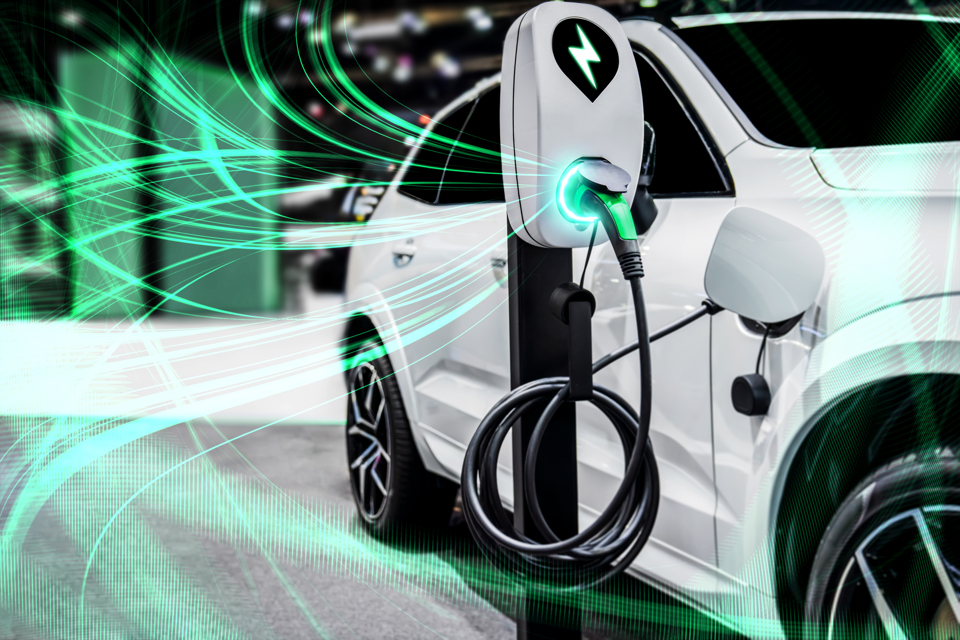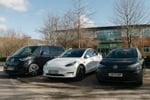An absence of consumer incentives in the November 22 Autumn Statement could mean a lacklustre electric vehicles (EV) market next year with the motor industry revising down growth to a 22.3% market share.
Figures released by the Society of Motor Manufacturers and Traders (SMMT) show that while October new car market beat pre-pandemic levels – at 153,529 new car registrations, up 14.3% year-on-year and 7.2% above 2019 - the picture was offset by subdued EV growth which struggled to increase market share after 42 months of consecutive growth.
The 15th month of consecutive growth was driven almost entirely by large fleet registrations, which grew 28.8% to reach 87,479 units.
Private demand was stable at 62,915 vehicles, a 0.3% increase, while the much smaller business sector saw registrations fall -15.2% to 3,135 units. With the sustained increase in new car registrations, overall vehicle uptake is now up 19.6% in the first 10 months, with the market currently enjoying its best year since 2019.
EV uptake did in fact continue to accelerate in October accounting for 37.6% of all new car registrations. Hybrid electric vehicles (HEVs) grew 24.6% to reach 19,574 units, while plug-in hybrid vehicles (PHEVs) recorded the highest proportional growth, up 60.5% to 14,285 registrations.
Battery electric vehicle (BEV) uptake increased for the 42nd month in a row, by 20.1% to 23,943 units.
Given overall market growth, however, this amounted to a BEV market share of 15.6% which the SMMT said was a relatively small rise from last year’s 14.8%.
“Furthermore, private registrations accounted for fewer than one in four new BEVs this year, underscoring the need for fiscal incentives for private consumers. Year to date, BEV volumes have risen 34.2% to account for 16.3% of new registrations this year, up slightly from 14.6% this time last year,” it said.
October’s plug-in vehicle performance follows a significant increase in chargepoint rollout in Q3, however, which improved significantly relative to new plug-in car uptake. Around 4,750 new standard chargepoints came online in the quarter, the largest ever quarterly delivery.
This equates to one new standard public chargepoint being installed for every 26 new plug-in cars reaching the road between July and September, improved from 38 in the same quarter last year.
“However,” the SMMT said, “installation was disproportionately focused on London and the South East, which received four out of five new chargepoints commissioned during the quarter – despite the region accounting for fewer than two in five new plug-in registrations during the same period.
In comparison, just 13 chargers were installed in Yorkshire and Humberside, while the North actually had 105 chargers taken out of service.”
It added that with EV uptake greatly influenced by perceptions of chargepoint infrastructure availability and accessibility, action should be taken to ensure more equitable distribution and pricing for public charging.
“Reducing VAT on public charging to match home use would mean those unable to install their own chargepoint – typically those in flats, terraces and rented accommodation – would avoid paying four times the tax paid by those who can – typically those who own houses with off-street parking,” it said, adding, “Binding targets for chargepoint rollout, in line with those set for the car market by the Zero Emission Vehicle Mandate and supported by the necessary changes to planning and grid connections so desperately needed, would also help accelerate installation, giving consumers confidence in being able to charge when and where needed.”
Mike Hawes, SMMT chief executive, said: “With demand for new cars surpassing pre-pandemic levels in the month, the market is defying expectations and driving growth. As fleet uptake flourishes, particularly for EVs, sustained success depends on encouraging all consumers to invest in the latest zero emission vehicles.
"The Autumn Statement is a key opportunity for government to introduce incentives and facilitate infrastructure investment. Doing so would send a clear signal of support for drivers, reassuring them that now is the time to switch to electric.”
The latest market outlook has been revised upwards to reflect market growth higher than expected for 2023.
Overall new car registrations are anticipated to reach 1.886 million by the end of the year, a rise of 2.1% on July’s expectations. However, expectations for BEV uptake have been downgraded again slightly, by -1.7% to 324,000 units resulting in an expected market share at year end of 17.2%.
Sue Robinson, chief executive of the National Franchised Dealers Association (NFDA), said the dealership community was looking towards the upcoming Autumn Statement on 22 November for the government to provide clarity on policy in the sector, particularly regarding EVs.
"Nevertheless," she said, "it is encouraging to see from the figures that EV numbers have increased despite the recent announcement by Rishi Sunak to push back the phasing out of ICE vehicles from 2030 to 2035.
"It is crucial that the government helps continue this momentum by offering attractive price incentives and investing into more charging infrastructure to meet higher demands.
"Whilst our members have been active in supporting consumers’ needs, the onus is on the government to provide clear guidance and stimulate further momentum for the sector.
"NFDA's recent Consumer Attitude Survey has highlighted that the lack of charging infrastructure does not instil confidence in prospective EV consumers with 57% of respondents alluding to this.
Additionally, 67% of respondents indicated that price remains the key barrier to EV adoption.”
Ian Plummer, commercial director of online automotive marketplace Auto Trader, said: “With tough Zero Emission Vehicle mandate requirements looming, manufacturers will be using every tool they can to increase new electric sales – currently, our research shows over two thirds of new electric cars are enjoying some kind of offer. By combining discounts and finance offers on the table, monthly payments for new electric cars are getting ever closer to petrol and diesel costs, marking an exciting point in the journey of mass electric adoption.
“Our data shows that when the price is right, electric cars sell well – right now in the used car market electric is the fastest selling fuel type following months of price drops.
So, it’s no surprise manufacturers are utilising multiple consumer incentives to ramp up demand in the new electric market, where finance penetration is high and monthly payments are the norm - and average RRPs for new electric cars are a third more expensive than petrol or diesel counterparts. With this context, retailers who can combine the strength of both electric affordability and availability of stock will dominate.”
Lisa Watson, director of sales at Close Brothers Motor Finance, said: “In light of the government’s delay to the 2030 ban, we may see a drop in demand for alternative fuel vehicles (AFVs), including electric vehicles (EVs).
EV stats are already skewed by fleet numbers, and our latest research found that more than a third of drivers are still hesitant about buying an AFV.
Dealers will need to make sure they are utilising all available insight and tools to ensure they are keeping track of changing trends and stocking their forecourts to best meet demand."
Alex Buttle, co-founder of used car marketplace Motorway.co.uk, added:” While private car buyers may want to make the switch to electric, what will push more motorists to buy EVs would be similar tax incentives offered to fleet drivers. If the government can get behind an initiative like this, it’s likely that sales will surge to even greater levels ahead of the switchover in 2035.”
Looking ahead to next year, the overall market outlook for 2024, the BEV market share outlook has been revised down slightly to an expected market share of 22.3%, despite registrations expected to reach 439,000 units, a 35.5% increase over 2023.
















Login to comment
Comments
No comments have been made yet.